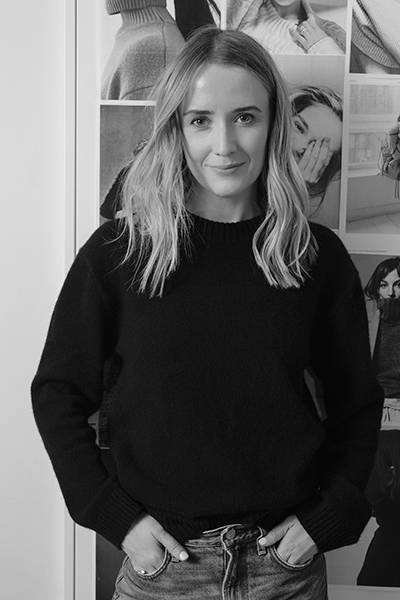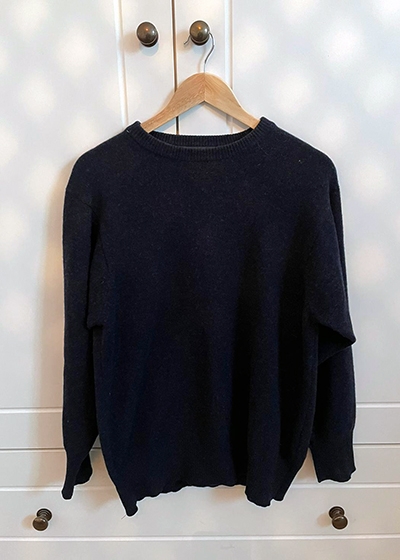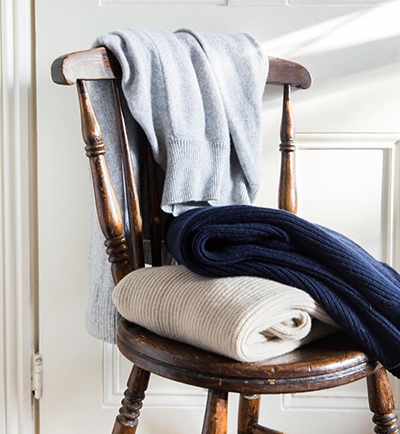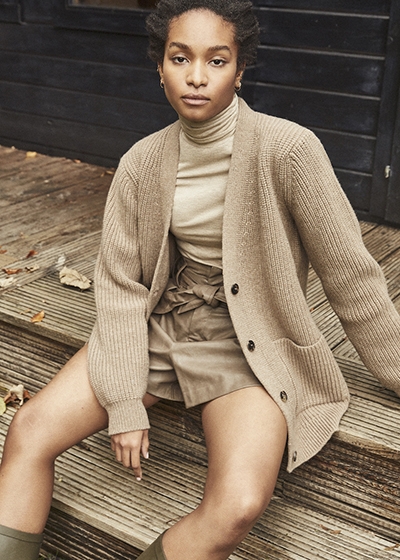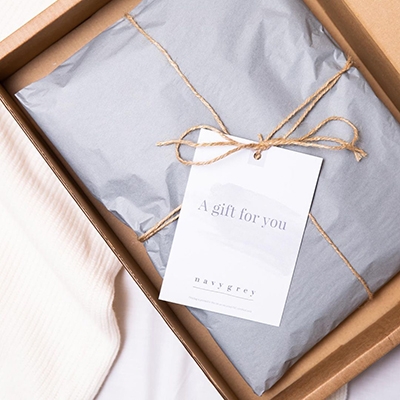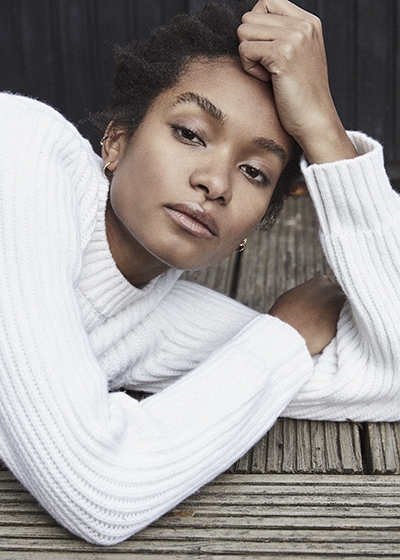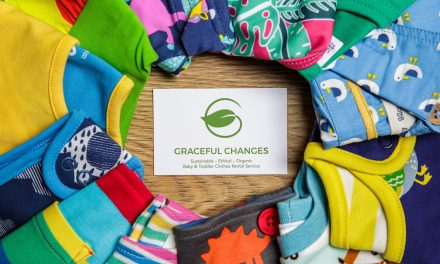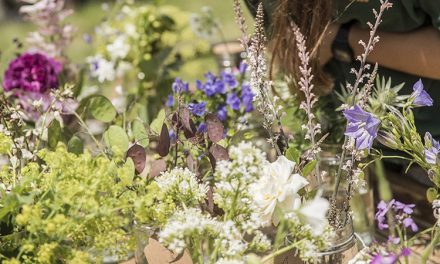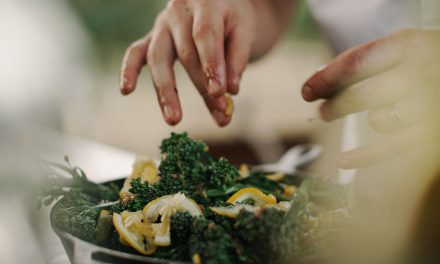10 Questions For Rachel Carvell-Spedding
Image: NavyGrey
NavyGrey is on a mission to create the only jumper you’ll ever wear. We asked it’s Founder Rachel Spedding-Carvell 10 Questions about classic Jumpers and making wool cool again.
It all began, as these stories often do with nonchalance. Memories of a treasured item of clothing that was loved and worn for years. An item of clothing not easily replicated, especially not with the kind of ethics one would hope for. Rachel Carvell-Spedding always remembered the perfect jumper that her mum had once owned. It was the search for this jumper that led her to wool. Through founding her company Navygrey, Rachel has become a bit of an expert on wool. She is adamant that a traceable supply chain is a must when selling anyone the perfect wool jumper. No matter how easy the fit, or how perfect the colour, if she can’t guarantee where the jumper has come from, then its not a jumper she would sell.
The Vendeur: What’s your background and why did you start Navygrey?
Rachel Carvell-Spedding: I studied history at university and had a career first in documentaries before moving into working in start-ups. I had a particular focus on education and technology. However I have always been obsessed about knitwear and spent my summer holidays working on the shop floor for Austin Reed menswear. I spent years trying to find a simple soft and plain wool jumper. Just like the one my mum had in her wardrobe for many years. When I kept trying and failing to find a jumper just like it, I decided I either had to start Navygrey or I had to give up on my quest to find a jumper that I truly loved. I chose the former.
TV: What were the main problems you were seeking to solve with Navygrey?
R C-S: I felt there was a gap in the market for not only perfected versions of plain classic knits, with a focus on the right fit and functionality, but ones which were made from a sustainably-sourced 100% soft wool. There was (and is) a plethora of cashmere jumpers on the market but not wool ones. Sadly, as much as it is soft, virgin cashmere has a high negative environmental impact. Roughly 100 times that of wool. The world’s demand for cashmere has led to huge areas of desertification particularly across Mongolia. This is having detrimental consequences to both the environment, local communities and herders.
It takes four goats to produce enough fibre to make one cashmere jumper, whereas one sheep produces enough wool to make four to five sweaters. I wanted to create products that celebrated and championed wool and improve its unfair association as the itchy alternative to cashmere. What’s more I wanted to create a product that had a clear story of provenance. I wanted my customers to understand exactly where their jumpers were coming from, not just in terms of the factory where they are made, but also the source of origin, from sheep to sweater. (For more information about Wool, listen to our Podcast episode with Finisterre.)
Image (right): the jumper that inspired it all, courtesy of Rachel Carvell-Spedding
TV: How did you go about selecting your mill and supplier?
R C-S: Due to the level of transparency that we required and the soft end feel of the jumpers, there were a very limited number of suppliers with which we could work. We found a highly regarded mill in Italy that was willing to work with us, despite being a small brand, to create a completely traceable supply chain from farm to factory. They are specialists in a very soft woollen-spun wool. With them we have been able to produce the lofty wool yarn in bespoke colours. Colours our customers have fallen in love with. In terms of other suppliers, we’ve naturally gravitated to small, often family-run enterprises here in the UK and Portugal. For us it’s about working with like-minded suppliers who really care about what we’re trying to achieve and are willing to go that extra mile to make things happen.
For example, our family-run warehouse in Devon is solar-powered and they have worked with us to adapt their storage and barcoding so that we can keep track of our stock in organic cotton bags rather than the usual plastic bags used for clothing. It has taken us a little while to find good people to work with, but it’s been worth it. Because we work with smaller suppliers and require traceability in our supply chain, it does mean that everything tends to take much longer. We just can’t move as quickly as other brands. But we do believe in our ethos to create fewer, better things. We’re happy being small and slower. It feels right for now.
TV: Why is traceability so important to you?
R C-S: When it comes to fibre, you really don’t know if what you’re getting is what it says it is. It’s very hard for someone not in the industry to comprehend, but the lack of transparency in the fibre industry is huge. Source of origin really matters to us because we want our customers to really understand the provenance and story behind every part of the journey. As consumers we have become disconnected with how things are made and where things come from. If we want to encourage consumers to buy fewer and better, and we want to see a change in the world and improve our relationship with the environment, then we have a duty to the customer to explain where a product comes from, why it is better and why what we’re doing matters.
TV: You work with a very small colour palette, why have you chosen to do this?
R C-S: We do plan to grow it a little more, but our colours are very much inspired by those which stand the test of time. When I started to talk to people about the name of the company, so many people responded immediately with ‘well that’s my wardrobe.’ And when I looked through archive imagery – both of my own family – parents and grandparents and more generally, those colours always stood out. Navygrey is very much about being comfortable. Relaxed and lived in. And naturally it’s those easy colours of navy, grey, creams and oat that just work, whatever your style. This year, we are introducing a new shade of red. But it’s a very understated tone. Every colour has to be wearable. It’s about surpassing trends and staying with those colours that last.
TV: What defines a ‘classic’ shape?
R C-S: I believe that what makes a classic shape is very personal. For something to be classic, it has to feel good. The person wearing it has to feel relaxed and happy, only then does it look good. When you look at the shapes and styles of knits that have stood the test of time, it’s because the wearer, be it Steve McQueen, Audrey Hepburn or Grace Kelly, looks just right. Personally for me, I love a subtly-oversized round neck crew style with a sleeve I can fold and scrunch up. I want to have enough room to wear a vest underneath, but not so much that I can’t throw a coat over it. Our customers at Navygrey have said what they love about our jumpers is that each knit, has those fit details that just mean it’s distinct but highly wearable. They’re knits that make you feel at home. To us, that makes something a classic.
TV: How does Navygrey minimise waste?
R C-S: We only order the exact amount of wool we need. We have a limited range and palette and only produce our jumpers in very small batches. Once we sell out, we then order more. We never produce excess stock. We also knit in a fully-fashioned way (rather than cut and sew which produces more waste). Any wool that does not make it into a garment is recycled by our factory. Being a circular company is definitely on our radar. This is already happening in the cashmere industry with Re-Verso ™, a yarn created from recycled cashmere fibres. However this isn’t happening with our Merino wool quality just yet. It is something that we’re talking to mills about and exploring and we’d love it to be part of the Navygrey product offering in the future, once we’ve really perfected the fibre and product.
TV: Your tags and packaging are also eco friendly, what other aspects of the business are you looking to improve in terms of sustainability?
R C-S: We have spent a lot of time to source packaging. Our tags, and boxes are made from 100% recycled materials. We know that simply being recyclable isn’t good enough. As a small but growing business there is always so much we want and need to improve. There are two very big areas on which we’d like to focus.
The first is our carbon footprint. Currently our wool travels from farms in Australia and South Africa to Mills in Italy and Scotland and a factory in Portugal. We then ship to customers all over the world. For example – our RELAXED jumper starts life on a sheep in Australia, goes to Italy to be washed, spun and dyed – then knitted in Portugal and then sent to the UK to be shipped to our customer. This is quite the journey. We’ve just started looking into partnering with a good organisation that can help us find the best way to reduce our impact here. To get the traceable, super-soft wool that both we and our customers love we do have to travel for it. We are looking at developing some products that will be made from more locally-sourced wool (but we’re already coming up against traceability issues – even here in the UK). It won’t be the same quality, so the products will be different. But we’re excited by the offering.
Secondly, as a company that produces products, we need to look not just at sustainability, but at moving towards regeneration. I believe that the future needs to be not just about ‘sustaining’ – it must be about ‘regenerating’. Quite quickly I have learned that as a small brand with limited resources you can only achieve so much, and that is why, excitingly, behind the scenes I am teaming up other organisations and brands to work towards creating regenerative supply chains. It’s very much a long-term process, but it’s paramount that we do this. The time is now.
TV: How can people extend the life of their jumpers?
R C-S: We include some very simple advice; wear one day, let it rest for two. This is really important for products made from untreated, natural fibres. We include a complimentary wooden wool comb with our jumpers, something which we’ve seen other brands copy which is great to see. This wool comb is good for removing those pesky little bobbles that appear on supersoft knits. We encourage customers not to wash their jumpers too much as wool is naturally antibacterial. However when they do, they should hand-wash it rather than sending them to the dry cleaners. The chemicals used by dry cleaners can really damage the wool long-term so they are best avoided. A soft wool yarn that’s 100% woollen-spun as opposed to worsted-spun (where the wool tends to be cleaner/shinier looking) and has not been treated with chemicals to make it machine-washable, does require care and attention to keep it looking good. But it’s worth it.
TV: Do you have plans to introduce more classics styles in the near future?
R C-S: We do. This autumn we introduced two new styles to our collection. First up is The TRADITIONAL, a jumper that blends the romance of a vintage Aran knit and ribbed fisherman sweater, with a contemporary shape and super-soft superfine Lamb’s Wool, to create a new kind of classic. It’s wearable, distinctive and made from 100% wool, spun on the banks of Loch Leven in Scotland. And secondly The HEIRLOOM CARDIGAN, a chunkier, longer-line cardigan made from the same Lamb’s Wool. The ultimate in sustainable luxury.
We also have some new things planned for 2021 but everything is still very dependent on how COVID-19 affects our supply chain and suppliers. Hopefully in 2021 there are brighter times ahead for everyone.
Disclaimer: The people and models in the images featured are not associated with The Vendeur and do not endorse it or the products shown. This post may contain affiliate links. Prices correct at time of publishing.
Did This Put A Smile On Your Face? Why Not Subscribe?
If you enjoyed this then theres plenty more on our email newsletters that you'll love. Whether you're a sustainable newbie or an eco conscious pro, our bi monthly emails will inspire you to live sustainably and ethically.

